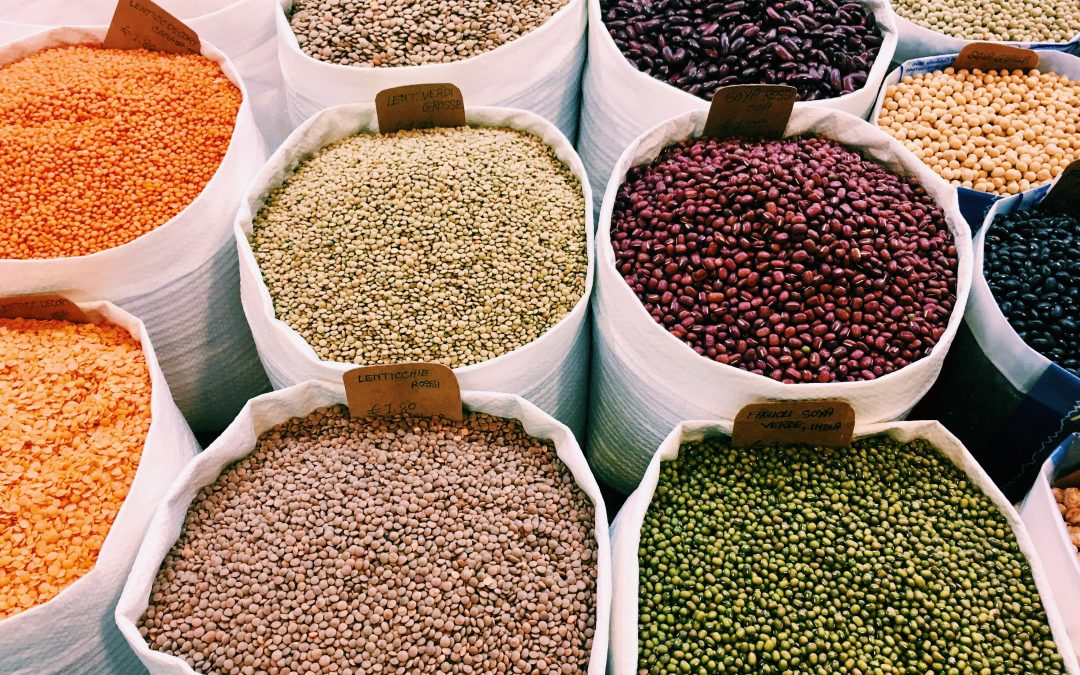We are into week 2 of Plantuary and diving into the bean pool…literally! If you haven’t checked out our Beans, Legumes and Pulses – Oh My! blog explaining what these different names mean – plus a quick cooking recipe – then be sure to visit that next. In the meantime, let’s get into the little, but mighty, lentil.
So what exactly are lentils?
Lentils are small, round seeds that are part of the legume family of plants (also known as pulses). They grow in pods like beans and peas. They are an excellent source of protein, fiber, folate, iron, and potassium. In comparison to other plant-based proteins, they are 26% protein, making them the third most protein-dense whole food after soybeans and hemp seeds. Talk about a protein punch!
What do you do with them?
Lentils are an incredibly versatile food, i.e., good for much more than soup! First – unlike other legumes – you don’t need to soak them. Just a quick rinse, then scan through to throw away the broken ones and they’re ready for use! I like to refer to them as the “no-soak, quick cooking” pulse. And because they cook so much quicker than other legumes, they are a perfect pantry staple.
What’s with the different colors?
In the US, there are 7 different varieties of lentils grown that vary in color, size, and flavor. The outer shell of the seed can be light brown, green, speckled gray-green, yellow, red, or black. All varieties are equally nutritious, yet the texture can differ depending on the type. For example, red lentils, which have been “split”, removing the outer shell, have a softer texture when cooked and are great for making purees for dips or veggie burgers. On the other hand, black, French and green lentils are intact, so they have a firmer texture, making them good in salads and soups. No matter the varietal, lentils can be added to most any dish to give it a hearty texture with a rich, nutty flavor.
Even more lentil fun facts:
- Protein-packed: ½ cup of cooked lentils contains at least 9 grams of protein (more than an eggs worth).
- Fiber Rich: each ½ cup serving contains 8 grams of fiber OR about 25% of your daily needs.
- Fast-cooking: After a quick rinse, they cook about 10-30 minutes, depending on the variety and desired texture.
- Long-shelf life: Dry, uncooked lentils can be kept in an airtight container in a dry, cool place for up to 1 year.
So, you’re ready to try, but not sure how to start. Follow these 3 simple steps to whip up your first batch of lentils:
Rule of thumb: 1 cup of lentils requires 1 ½ cup of liquid, which can be water or broth for added flavor.
- Bring the liquid to boil.
- Add the lentils and boil for 2-3 minutes.
- Reduce heat to simmer and cook lentils until tender. Green and brown lentils take approximately 20 – 30 minutes to cook, while red lentils cook in about 15 minutes.
Storage: Once cooked and cooled, lentils last in the fridge for 4-5 days and in the freezer for up to 6 months.
How will you be enjoying your lentils this Plantuary?
By: Erin Pellegrin RD, LDN

